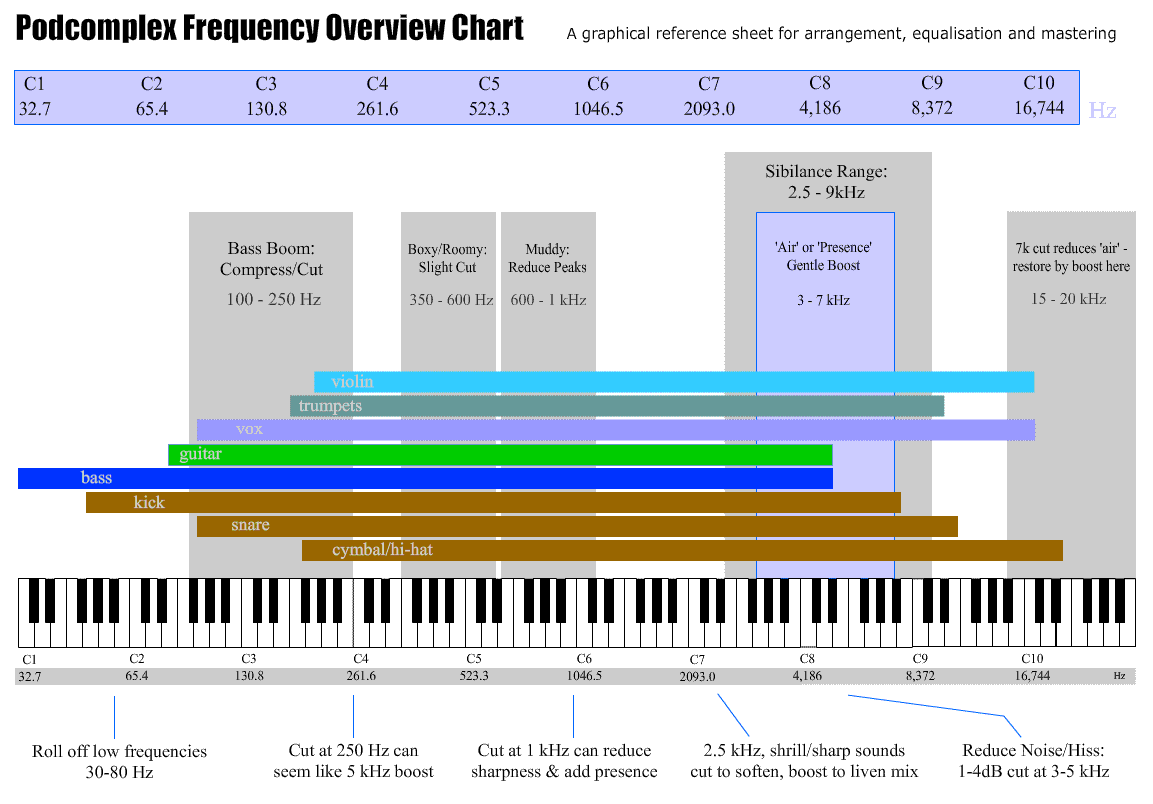Music Production Mistakes – Fat Actor Overlap
Although high-quality audio production gear is now within reach of pocket-money producers, most bands (and solo electronic artists) still make the same basic mistakes when laying down their tracks…
Producing Balanced Music
If a song lacks definition and clarity, the problem may be frequency overlap – different instruments fighting each other within the same range of the audio frequency spectrum. This is sometimes referred to as ‘masking’, where one sound obscures another.
The key to a clear recording is minimising the amount of masking.
Masking In The Box
Some producers conceptualise this process by imagining the soundfield as a box, created by the axes of volume, panning and frequency. By balancing the qualities of each element, they gradually ‘fill the box’ to create a full-sounding recording.
It’s worth noting that producers also refer to the process of using a computer-based DAW as recording ‘in the box’. Recording with outboard hardware is then ‘out of the box’.
Using a multi-track system, it’s tempting to keep adding new tracks to a song, simply because you can. However, the old cliché that ‘less is more’ is often very true. One good sound is much better than seven average sounds, all fighting for room and cancelling each other out.
Staging Your Production
The frequency spectrum is a stage for you to put your sounds on. Like a theatre stage, it has a set width and height, which limits the number (and size) of ‘actors’ you can put on it. The width of the stage is the frequency spectrum, which in terms of human hearing ranges from about 20 Hz to 20 kHz. If you’re recording in 24-bit, then your headroom is 144 dB.
If you are using only three or four actors, you can make them nice and fat, and they still have plenty of stage room in which to wave their arms about.
However, if you have seventeen actors, you’ll have to make them thin, and even then they’ll be very cramped and won’t be able to express themselves. If you have seventeen actors and you don’t bother making them thin, they will be all piled up on top of one another, unable to move at all. In fact, you won’t even see the actors at the bottom of the pile.
Weight Management For Instruments
So before you hand out tickets for opening night, you need to whip your actors into shape and put them exactly where you want them.
You can control the ‘weight’ of your sounds by using EQ and other effects (such as chorus and reverb for fattening). You can also adjust the sound’s position on stage by filtering out certain frequencies.
Take, for example, a heavy synth pad which sounds amazingly lush on its own. This might occupy a huge frequency range – maybe from 40 Hz up to 2 kHz, or even more.
If you want to play a bass over the top of the synth, you could put a filter on the syth that cuts its frequencies between 40 Hz and 200 Hz. This creates a space on stage for the bass to step into, and the presence of the bass will compensate for the gap in the synth’s own sound.
You could also roll off the bass above 200 Hz, so that it doesn’t disturb the synth in that area. This should ensure that the two sounds work well together, as they each have their own clearly defined space.
Staging A Comeback For Music Production
Rolling off certain freqencies can both ‘thin’ a sound and position it on the soundstage. Filters that cut out freqencies completely are best for positioning, whereas gentler slopes can be used to sculpt the shape of a sound.
Next week I’ll continue this train of thought, and consider how we can make our actors a bit taller and more imposing with (you guessed it) compression…
